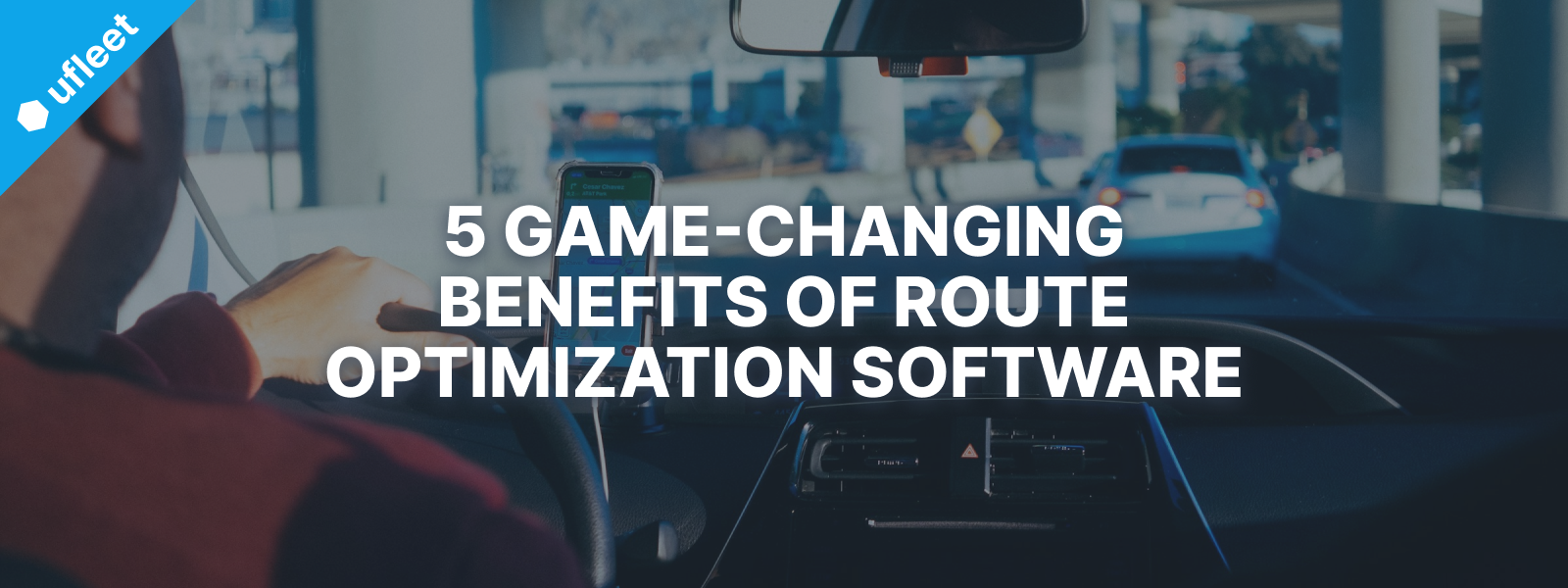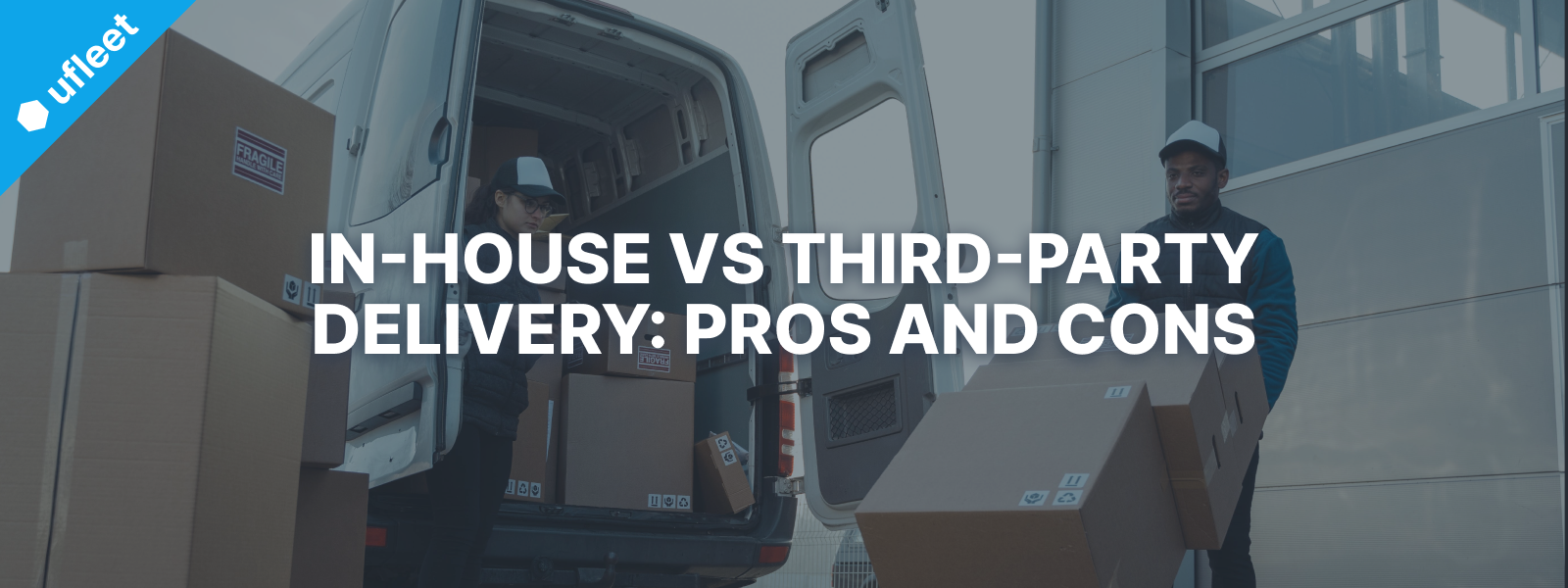From what's a delivery sequence to what's an average cost of delivery, here's every last mile delivery term you need to know to stay up to date in 2025.

Whether you're new to last mile delivery or already experienced, there are tens of terms you might not be familiar with.
Th list covers the most important last mile delivery terms you should know. We hope you'll find it useful.
| A | B | C | D | E | F |
| G | H | I | J | K | L |
| M | N | O | P | Q | R |
| S | T | U | V | W | X |
| Y | Z |
A
Automated route optimization
Automated route optimization includes the use of route optimization software or any other kind of technology to find the most optimal routes to make a set of deliveries.
Autonomous delivery
Autonomous delivery includes the use of self-moving robots and drones to make deliveries. People program the delivery routes for the robots and drones but the latter can move from point A to point B independently.
Average cost of delivery
The average cost of delivery (also called cost to serve) indicates how much you pay on average for a single delivery. It helps you price a delivery to a client and also shows if your margins can afford free deliveries. You can calculate it by using this formula:
C
Cash in advance
Cash in advance indicates the situation where the customer pays for a product at the time of the purchase—i.e. before the product or service has been received or even shipped. Although it's called "cash", this payment is made via credit or debit card, bank transfer, or another type of digital payment.
Cash on delivery
Cash on delivery indicates the situation where the customer pays for a product once they get it delivered—usually at their doorstep, or at a courier office. The payment can be made in cash, by credit or debit card, or by a digital wallet.
Click and collect
Click and collect is a delivery model that allows customers to purchase and pay for items online and then pick them up from a designated physical location—usually a store or delivery storage point.
Cost per mile (CPM)
This indicates how much it costs you on average to drive 1 mile when making a delivery. The cost per mile (CPM) is an important indicator that helps you price your delivery service.
Customer notifications
Customer notifications in last mile delivery include SMS, emails, or mobile push notifications informing your customers about the status of their orders. They are usually a key feature of route optimization software solutions.
D
Delivery operations
The delivery operations include all processes, tasks, and workflows that you rely on to make your deliveries. They span from the daily activities of your dispatchers, and drivers, to what administration does to support your delivery service.
Delivery sequence
A delivery sequence indicates the order in which a set of delivery tasks should be done. It's a critical element of the route planning process that ensures timely and efficient deliveries.
Delivery tracking
Delivery tracking is a technology that allows you to provide data about the status and location of a delivery. It can be either real-time or not. In the first case, you can monitor the status and location at any time. In the second, you can access the same data but only about particular events–e.g. the parcel is dispatched, leaves the warehouse, etc.
Driver app
The driver app is a mobile application that's part of route optimization software solutions and allows delivery drivers to do their job more easily. Each driver app is different but usually, it includes the daily delivery tasks, turn-by-turn navigation, proof of delivery functionality, and easy access to the customer contact details and the dispatcher team.
E
Estimated time of arrival (ETA)
The estimated time of arrival (ETA) indicates when the delivery vehicle will most probably be at the delivery address. While this indicator is very close to accurate, it's not always 100% true. ETA is calculated based on distance, average speed, specific cargo parameters, etc.
F
Failed delivery
A failed delivery or failed delivery attempt indicates the situation in which the carrier tried to deliver the package but couldn't do it due to various reasons—there was nobody at the address, the contact details were inaccurate or incomplete, the customer refused to accept the package, etc.
First attempt delivery rate (FADR)
The first attempt delivery rate indicates the percentage of successful deliveries on the first attempt. It's an important indicator of the efficiency of the delivery process. It's calculated as follows:
I
Idle time
Idle time indicates paid work hours during which a delivery driver is not able to be productive for a set of reasons—poor delivery sequencing that leads to gaps in schedules, lack of parking spots that leads to extra miles and time spent looking for one, unethical behavior on behalf of delivery drivers, and more.
In-house delivery
In-house delivery indicates the process of a business managing deliveries with its own delivery fleet, drivers, and warehouses. In-house delivery allows for higher control over the delivery process but requires a financial investment, human resources, and delivery expertise.
L
Last mile delivery
Last mile delivery is the final stage of the shipping process. It includes the transportation of packages from distribution centers to customers' doorsteps. This stage is not only time-consuming but also the costliest. According to industry reports, last-mile expenses account for approximately 53% of total delivery costs.
Less-Than-Truckload (LTL)
Less-than-truckload (LTL) is a term that describes the delivery process of small parcels, that don't make up the full capacity of a delivery truck. It can refer to the freight itself, or to the carrier that transports the freight.
Loading time
Loading time in delivery indicates the time required to load parcels onto delivery vehicles at a warehouse or distribution center.
M
Manual route optimization
Manual route optimization indicates the process of finding the most optimal routes for a set of deliveries based on the personal experience, knowledge, and judgment of a person. Usually, the person uses physical maps, pen and paper, and/or digital tools like Excel, Sheets, and Google Maps. Although there are digital apps involved, the planning, mapping and optimization are still done manually.
Micro-fulfillment center
A micro-fulfillment center is a smaller than the regular warehouse distribution facility, strategically placed closer to densely populated urban areas or customer clusters. It's used to decrease travel times and improve overall efficiency.
Multi-drop delivery
Multi-drop delivery is when a courier delivers to multiple addresses without going back to the warehouse or pickup location. This is the usual case in last mile and the main reason for most of the challenges during this last stage of delivery.
O
On-demand delivery
On-demand delivery is a delivery model where customers receive their package immediately or within a very short time after they place an order. It's typically applied for perishable goods like food and groceries.
P
Proof of delivery
A proof of delivery is a document that confirms a delivery has ben successfully made. It could be on a piece of paper, or in a digital format. It can be the customer's signature, a photo, and/or a text confirmation, or any other form of legit proof.
R
Returns management
Returns management is the process of accepting, receiving and handling packages that the customer has returned.
Reverse logistics
Reverse logistics is the stage of supply chain where packages are returned from their final destination back to the retailer or distribution center for the purpose of returns, repairs, recycling, or disposal.
Route optimization
Route optimization is a business-critical process in delivery that identifies the most efficient way to reach a series of delivery addresses. Most efficient means performing best in terms of distance, travel time, fuel consumption, vehicle load, delivery time windows, and/or other parameters.
Route optimization algorithm
A route optimization algorithm is a mathematical computational method used to determine the most efficient delivery routes. The most common types of route optimization algorithms are shortest path algorithms, exact algorithms and heuristic algorithms. Each solves the mathematical problem to a different extent and at a different speed.
Route optimization software
Route optimization software is technology that helps you automate delivery planning and optimization, dispatching, and communication between dispatchers, drivers, and customers. It’s fast, efficient and supports deliveries at scale. It brings numerous benefits that directly impact the bottom line.
T
Third-party delivery (3PL)
Third-party delivery (3PL) is the outsourcing of deliveries to professional carriers such as UPS, FedEx, or smaller local courier services. It frees businesses a lot of time and resources but takes away much of the control they have over the delivery process.
Time window
A time window is the interval of time during which a delivery is meant to be made. Time windows are used in route optimization to ensure that deliveries are made within acceptable time frames, and meet customer expectations and business requirements.
Traveling salesman problem (TSP)
The traveling salesman problem (TSP) is a mathematical problem that emerges in the following situation: You're a salesperson who needs to visit several cities and return home, and you want to travel the shortest distance possible and visit each city exactly once. It's where modern route optimization originates its roots from.
W
White glove delivery
White glove delivery is a special delivery service provided for products that require special attention, care and attitude towards the customer. Such products could be luxury items, security-associated products, designer furniture, and more.
WISMO (Where Is My Order?)
WISMO which stands for "Where is My Order?" is a customer inquiry related to an expected delivery. It's usually a case if the carrier has not provided delivery tracking or there's an unexpected delay.
More is coming in the following days! Stay tuned. :)
Never miss a post
You may also like…
You too can reduce costs and improve efficiency with Ufleet
- plan and optimize delivery routes
- manage and empower drivers
- enhance customer experience
- make data-driven business decisions
We’d love to learn about your challenges.
Leave your email and we’ll get back to you.





